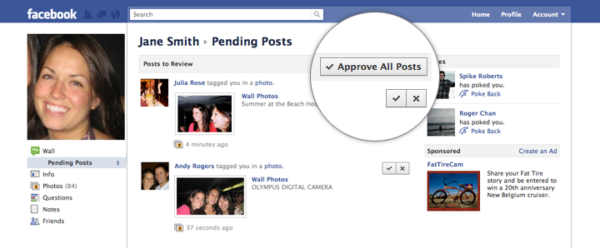New Facebook Sharing Controls Undermine Google+ Privacy Advantage
There will be extensive discussion and debate today about whether the broad and welcome array of new privacy, tagging and sharing controls on Facebook are or aren’t a response to Google+. I directly asked Facebook that question and was told that the new features have nothing to do with Google+ and have been in the […]
I directly asked Facebook that question and was told that the new features have nothing to do with Google+ and have been in the works for months, as a response to user feedback.
Indeed, if there’s a consistent issue on which Facebook is repeatedly criticized it’s privacy and user control over content sharing. And this has been one of the two main advantages of Google+: explicit inline privacy and sharing controls and easy group creation and management. Facebook isn’t yet addressing the latter but with the new tools it’s directly taking on Google+’s privacy and sharing advantages.
Taking Away an Argument for Google+
Whether or not Google+ figured prominently in Facebook’s decision to shift to more explicit and more granular (inline) privacy control, as a practical matter it largely undermines the privacy argument in favor of Google+. Does it “kill” Google+? No. But Google will need to continue to innovate as Facebook adds and updates features to match or undermine it.
Now on to the new features. There’s a lot that Facebook is doing at once — I got about a 20 minute high-speed download a few minutes ago — and I won’t be able to adequately address everything in this post. However, at the highest level, Facebook is basically doing three things:
- Making privacy and sharing controls more explicit (rather than several clicks away)
- Making those sharing controls available on an update by update basis, inline
- Offering users more control over photo tagging and choice over what content appears on their profiles
The new controls will roll out on Thursday and will be supported by lots of material, FAQs and videos to explain them in more detail to users. However many things will be relatively intuitive.
More Power Over the Profile
Each photo, each post or status update can be made “public” (a change from “everyone”), shared only with friends or shared with custom groups. Global controls are still available but the new tools permit much more explicit control over who sees what on your profile on a case by case basis. Facebook users will also more easily be able to see how their profiles look to specific third parties (parents, colleagues, would-be employers and so on).


Veto or Remove Tags
Previously when users were tagged in photos by third parties (friends, colleagues, random others) those would show up in your news feed. Now you’ll receive a notification that gives you the option to approve the tag. If you don’t want the image to show up in your feed and on your profile this new change will allow you to prevent that. The image and the tag will still show up in the photo owner’s feed and profile, however.
In addition third parties (friends, etc.) that were allowed to see your photos and content could tag them. Now users will have control over that process and can reject (or approve) efforts by friends to tag content on their profiles.
 Users will also now be able to remove content from their profiles, remove tags and/or request that content be taken down by others.
Users will also now be able to remove content from their profiles, remove tags and/or request that content be taken down by others.
Flexible Location Tagging Options
Before you could only geographically tag content with a GPS-based location via mobile devices. Now there’s more flexibility and users can associate location with any content. So photos of the trip to Hawaii can be manually tagged with a location after the fact, for example. Users can also associate locations with future plans: “I’m going to Hawaii next week; here’s a photo of the hotel.”
 Users can also remove location tags very easily.
Users can also remove location tags very easily.
Offering Total User Control
This is a quick summary of many, though not all, of the new privacy and sharing controls being implemented by Facebook this week. The thrust of all these changes is to give the user total and explicit control over what appears on his/her profile. These changes should be welcomed by all Facebook users and privacy advocates — whether or not they were motivated by Google+.



